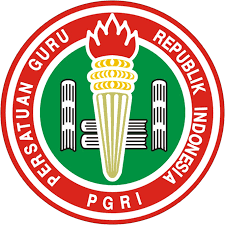“Tradisi Manganan”: Sedekah Bumi dalam Masyarakat Bojonegoro, desa Dander dilihat dari Kebersyukuran
“Tradisi Manganan”: Sedekah Bumi dalam Masyarakat Bojonegoro, desa Dander dilihat dari Kebersyukuran
DOI:
https://doi.org/10.36526/santhet.v8i2.4022Keywords:
Manganan, earth alms, gratitude, thanksgiving, Javanese traditionAbstract
The tradition of manganan or earth alms is an annual tradition that is held once a year. This research is related to gratitude. Gratitude itself is a feeling of amazement and appreciation of the favors that have been obtained from the God to His servants, gratitude to others, and also to nature. This research aims to find out the description of gratitude in the manganan tradition in Dander Village, Bojonegoro. The researcher used the Interpretative Phenomenological Analysis (IPA) method. Researchers try to compile the results of literature review, interviews, and other supporting documentation. Things that are obtained is a description of gratitude in the manganan tradition. In addition, the researcher found a unique theme from the interview results, namely respecting the universe from the earth alms. From this, we can learn to respect the universe from the earth alms. learn to respect the surrounding nature. In addition, the earth alms itself is not only done by the Muslim community but can also be followed by non-Muslims.
References
Al-Munajjid. (2006). Silsilah amalan hati. Ikhlas, tawakal, optimis, takut, bersyikur, ridha, sabar, instropeksi diri, tafakur, mahabbah, taqwa, wara. Irsyad Baitus Salam.
Anam, S. (2016). Penanaman pendidikan karakter pada anak melalui tradisi sedekah bumi sebagai kearifan lokal adat masyarat Desa Kedungadem Kabupaten Bojonegoro Jawa Timur. Jurnal Tapis, 2(1), 147–165.
Arinda R., I. Y. (2014). Sedekah bumi (Nyadran) sebagai konvensi tradisi Jawa dan Islam masyarakat Sraturejo Bojonegoro. El Harakah, 16(1), 100–110. https://doi.org/10.18860/el.v16i1.2771
Ayu, S. S., Sariban, & Nisaul, B. S. (2020). Legenda sumur Sumbergede ( Kajian struktur naratif , nilai budaya , dan pesepsi. Hastawiyata, 3(1), 1–12. https://doi.org/10.21776/ub.hastawiyata.2020.003.01.04
Bayurini, D. S., Supriatna, M., & Peniasiani, D. (2023). Hajat Bumi: Simbol kebersyukuran dan kemampuan resiliensi pada masyarakat kecamatan Klari Kabupaten Karawang. Jurnal Pendidikan Indonesia, 12(2), 14–24. https://journal.penerbitjurnal.com/index.php/educational/article/view/54
Creswell, J. W. (2021). Research design (Cetakan V). Pustaka Pelajar.
Dariyo, A., & Rahaditya, R. (2020). Nilai-nilai pancasila dalam tradisi sedekah bumi pada masyarakat tambang minyak rakyat di Desa Wonocolo, Kedewan, Bojonegoro, Jawa Timur. Jurnal Pancasila, 1(2), 25–38.
Dzikroh, M., & Utami, W. S. (2013). Kajian tentang adaptasi petani terhadap peristiwa banjir Bengawan Solo di Desa Kedungprimpen Kecamatan Kanor Kabupaten Bojonegoro. Journal of Petrology, 369(1), 23–32. http://dx.doi.org/10.1016/j.jsames.2011.03.003%0Ahttps://doi.org/10.1016/j.gr.2017.08.001%0Ahttp://dx.doi.org/10.1016/j.precamres.2014.12.018%0Ahttp://dx.doi.org/10.1016/j.precamres.2011.08.005%0Ahttp://dx.doi.org/10.1080/00206814.2014.902757%0Ahttp://dx.
Emmons, R. A. (2007). Gratitude, subjective well-being, and the brain. The Guilford Press.
Endraswara, S. (2012). Falsafah hidup Jawa. Cakrawala.
Graham, S., & Barker, G. P. (1990). The down side of help: An attributional-developmental analysis of helping behavior as a low-ability cue. Journal of Educational Psychology, 82(1), 7–14. https://doi.org/10.1037/0022-0663.82.1.7
Huda, M. T. (2017). Harmoni sosial dalam tradisi sedekah bumi masyarakat Desa Pancur Bojonegoro. Religió: Jurnal Studi Agama-Agama, 7(2), 267–296.
Kim, U., Yang, K.-S., & Hwang, K.-K. (2022). Indigenous and cultural psychology. Pustaka Pelajar.
Levitt, H. M. (2020). Reporting qualitative research in psychology: How to meet APA Style Journal Article Reporting Standards (Revised Edition). In Reporting qualitative research in psychology: How to meet APA Style Journal Article Reporting Standards (Revised Edition). https://doi.org/10.1037/0000179-000
Masruroh, N., Rahman, A., & Hermawan, Y. (2021). Eksistensi sedekah bumi di era modern: Desa wisata Plesungan Kecamatan Gondangrejo Kabupaten Karanganyar. Satwika : Kajian Ilmu Budaya Dan Perubahan Sosial, 5(2), 268–283. https://doi.org/10.22219/satwika.v5i2.17209
McCullough, M. . E., Kilpatrick, S. D., Emmons, R. A., & Larson, D. B. (2001). Is gratitude a moral effect? Psychological Bulletin, 127(2), 249–266. https://ezp.lib.unimelb.edu.au/login?url=https://search.ebscohost.com/login.aspx?direct=true&db=edsovi&AN=edsovi.00006823.200103000.00004&site=eds-live&scope=site
McCullough, M. E., Emmons, R. A., & Tsang, J. A. (2002). The grateful disposition: A conceptual and empirical topography. Journal of Personality and Social Psychology, 82(1), 112–127. https://doi.org/10.1037/0022-3514.82.1.112
Morrow, C., Peterson, C., & Seligman, E. P. (2004). The values in action classification of character streghts (Vol. 27, Issue 1). Ricerche.
Nasrulloh, A., & Ajidin, F. A. (2023). The tradition of earth and sea amlsgiving viewed according to islamic law. Islamic Law Review: Journal of Islamic Family Law and Social Issues, 1(1), 17–37.
Prasasti, S. (2020). Konseling indigenous: Menggali nilai-nilai kearifan lokal tradisi sedekah bumi dalam budaya Jawa. Cendekia, 14(2), 110–124. https://doi.org/10.21260/ehb.1912.10
Rinawati, & Puspitasari, I. (2022). Struktur Levi Strauss dalam mitos sedekah bumi “Nyadranan.” Jurnal Pendidikan Tambusai, 6(1), 8481–8492.
Ryff, C. D. (1989). Happiness is everything, or is it? Explorations on the meaning of psychological well-being. Journal of Personality and Social Psychology, 57(6), 1069–1081. https://doi.org/10.1037/0022-3514.57.6.1069
Sari, L. D. I., Maskub, Lib, M., & Rahmawati, Z. D. (2022). Nilai budaya sedekah bumi Desa Turigede, Kepohbaru, Bojonegoro. Edu-Kata, 8(1), 29–43. https://doi.org/10.52166/kata.v8i1.2879
Seligman, M. E. P., Steen, T. A., Park, N., & Peterson, C. (2005). Positive psychology progress: empirical validation of interventions. The American Psychologist, 60(5), 410–421. https://doi.org/10.1037/0003-066X.60.5.410
Siregar, H. S., Fikri, M., & Khorinnisa, R. (2021). The value of Islamic Education in the sedekah bumi ritual. Al-Ishlah: Jurnal Pendidikan, 13(3), 2049–2060. https://doi.org/10.35445/alishlah.v13i3.1142
Trinarso, A. P. (2018). ilmu kawruh bejo Ki Ageng Suryamentaram. Jurnal Filsafat, 7(1), 67–82. https://doi.org/https://doi.org/10.33508/arete.v7i1.1863
Wafiah, W., Mangundjaya, W. L., Bhayangkara, U., Raya, J., Bekasi, K., & Psikologis, K. (2023). Rasa bersyukur sebagai prediktor kesejahteraan psikologis pekerja. 1(2), 141–152.
Weiner, B., Russell, D., & Lerman, D. (1979). The cognition-emotion process in achievement-related contexts. Journal of Personality and Social Psychology, 37(7), 1211–1220.
Wood, A. M., Froh, J. J., & Geraghty, A. W. A. (2010). Gratitude and well-being: A review and theoretical integration. Clinical Psychology Review, 30(7), 890–905. https://doi.org/10.1016/j.cpr.2010.03.005





























